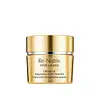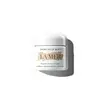What's inside
What's inside
 Key Ingredients
Key Ingredients

 Benefits
Benefits

 Concerns
Concerns

 Ingredients Side-by-side
Ingredients Side-by-side

Water
Skin ConditioningButyrospermum Parkii Butter
Skin ConditioningCaprylic/Capric/Myristic/Stearic Triglyceride
EmollientMethyl Trimethicone
Skin ConditioningDi-C12-15 Alkyl Fumarate
EmollientDimethicone
EmollientButylene Glycol
HumectantSteareth-2
EmulsifyingStearyl Alcohol
EmollientGlyceryl Stearate
EmollientPentylene Glycol
Skin ConditioningGlycerin
HumectantSteareth-21
CleansingPunica Granatum Sterols
Skin ConditioningSwertia Chirata Extract
HumectantNarcissus Tazetta Bulb Extract
AstringentLaminaria Digitata Extract
Skin ProtectingPolygonum Cuspidatum Root Extract
AntioxidantCucumis Sativus Fruit Extract
EmollientPyrus Malus Fruit Extract
Skin ConditioningScutellaria Baicalensis Root Extract
AstringentErgothioneine
AntioxidantArtemia Extract
Skin ConditioningSaccharomyces Lysate Extract
HumectantFuscoporia Obliqua Sclerotium Extract
Skin ConditioningGelidiella Acerosa Extract
Skin ProtectingCordyceps Sinensis Extract
AntioxidantGlycine Soja Protein
EmulsifyingHydrolyzed Wheat Protein
Skin ConditioningCholesterol
EmollientCaffeine
Skin ConditioningLinoleic Acid
CleansingHypnea Musciformis Extract
Skin ProtectingLactis Proteinum
Skin ConditioningHordeum Vulgare Extract
EmollientPearl Powder
Acetyl Hexapeptide-8
HumectantPropylene Glycol Dicaprate
EmollientAlgae Extract
EmollientSodium Hyaluronate
HumectantTrehalose
HumectantPorphyridium Cruentum Extract
Skin ConditioningAcetyl Glucosamine
Skin ConditioningGold
Cosmetic ColorantHelianthus Annuus Seed Extract
Skin ConditioningDecarboxy Carnosine Hcl
Skin ConditioningCaprylyl Glycol
EmollientGlucose
HumectantYeast Extract
Skin ConditioningPolysilicone-11
Isohexadecane
EmollientTocopheryl Acetate
AntioxidantSodium Hydroxide
BufferingAcrylamide/Sodium Acryloyldimethyltaurate Copolymer
Emulsion StabilisingCarbomer
Emulsion StabilisingPolysorbate 80
EmulsifyingLecithin
EmollientPolymethylsilsesquioxane
Citric Acid
BufferingCellulose
AbsorbentParfum
MaskingPentaerythrityl Tetra-Di-T-Butyl Hydroxyhydrocinnamate
AntioxidantSodium Metabisulfite
AntioxidantBHT
AntioxidantSodium Sulfite
PreservativeDisodium EDTA
Sodium Benzoate
MaskingSodium Dehydroacetate
PreservativePhenoxyethanol
PreservativeCI 19140
Cosmetic ColorantCI 17200
Cosmetic ColorantWater, Butyrospermum Parkii Butter, Caprylic/Capric/Myristic/Stearic Triglyceride, Methyl Trimethicone, Di-C12-15 Alkyl Fumarate, Dimethicone, Butylene Glycol, Steareth-2, Stearyl Alcohol, Glyceryl Stearate, Pentylene Glycol, Glycerin, Steareth-21, Punica Granatum Sterols, Swertia Chirata Extract, Narcissus Tazetta Bulb Extract, Laminaria Digitata Extract, Polygonum Cuspidatum Root Extract, Cucumis Sativus Fruit Extract, Pyrus Malus Fruit Extract, Scutellaria Baicalensis Root Extract, Ergothioneine, Artemia Extract, Saccharomyces Lysate Extract, Fuscoporia Obliqua Sclerotium Extract, Gelidiella Acerosa Extract, Cordyceps Sinensis Extract, Glycine Soja Protein, Hydrolyzed Wheat Protein, Cholesterol, Caffeine, Linoleic Acid, Hypnea Musciformis Extract, Lactis Proteinum, Hordeum Vulgare Extract, Pearl Powder, Acetyl Hexapeptide-8, Propylene Glycol Dicaprate, Algae Extract, Sodium Hyaluronate, Trehalose, Porphyridium Cruentum Extract, Acetyl Glucosamine, Gold, Helianthus Annuus Seed Extract, Decarboxy Carnosine Hcl, Caprylyl Glycol, Glucose, Yeast Extract, Polysilicone-11, Isohexadecane, Tocopheryl Acetate, Sodium Hydroxide, Acrylamide/Sodium Acryloyldimethyltaurate Copolymer, Carbomer, Polysorbate 80, Lecithin, Polymethylsilsesquioxane, Citric Acid, Cellulose, Parfum, Pentaerythrityl Tetra-Di-T-Butyl Hydroxyhydrocinnamate, Sodium Metabisulfite, BHT, Sodium Sulfite, Disodium EDTA, Sodium Benzoate, Sodium Dehydroacetate, Phenoxyethanol, CI 19140, CI 17200
Algae Extract
EmollientParaffinum Liquidum
EmollientPetrolatum
EmollientGlycerin
HumectantIsohexadecane
EmollientMicrocrystalline Wax
Emulsion StabilisingLanolin Alcohol
EmollientCitrus Aurantifolia Peel Extract
CleansingSesamum Indicum Seed Oil
EmollientEucalyptus Globulus Leaf Oil
PerfumingSesamum Indicum Seed Powder
Skin ConditioningMedicago Sativa Seed Powder
Skin ConditioningHelianthus Annuus Seedcake
AbrasivePrunus Amygdalus Dulcis Seed Meal
AbrasiveSodium Gluconate
Skin ConditioningCopper Gluconate
Skin ConditioningCalcium Gluconate
HumectantMagnesium Gluconate
Skin ConditioningZinc Gluconate
Skin ConditioningMagnesium Sulfate
Paraffin
PerfumingTocopheryl Succinate
AntioxidantNiacin
SmoothingWater
Skin ConditioningBeta-Carotene
Skin ConditioningDecyl Oleate
EmollientAluminum Distearate
Emulsion StabilisingOctyldodecanol
EmollientCitric Acid
BufferingCyanocobalamin
Skin ConditioningMagnesium Stearate
Cosmetic ColorantPanthenol
Skin ConditioningZea Mays Oil
EmulsifyingLimonene
PerfumingGeraniol
PerfumingLinalool
PerfumingHydroxycitronellal
PerfumingCitronellol
PerfumingBenzyl Salicylate
PerfumingBenzyl Benzoate
AntimicrobialSodium Benzoate
MaskingAlcohol Denat.
AntimicrobialParfum
MaskingAlgae Extract, Paraffinum Liquidum, Petrolatum, Glycerin, Isohexadecane, Microcrystalline Wax, Lanolin Alcohol, Citrus Aurantifolia Peel Extract, Sesamum Indicum Seed Oil, Eucalyptus Globulus Leaf Oil, Sesamum Indicum Seed Powder, Medicago Sativa Seed Powder, Helianthus Annuus Seedcake, Prunus Amygdalus Dulcis Seed Meal, Sodium Gluconate, Copper Gluconate, Calcium Gluconate, Magnesium Gluconate, Zinc Gluconate, Magnesium Sulfate, Paraffin, Tocopheryl Succinate, Niacin, Water, Beta-Carotene, Decyl Oleate, Aluminum Distearate, Octyldodecanol, Citric Acid, Cyanocobalamin, Magnesium Stearate, Panthenol, Zea Mays Oil, Limonene, Geraniol, Linalool, Hydroxycitronellal, Citronellol, Benzyl Salicylate, Benzyl Benzoate, Sodium Benzoate, Alcohol Denat., Parfum
 Reviews
Reviews

Ingredients Explained
These ingredients are found in both products.
Ingredients higher up in an ingredient list are typically present in a larger amount.
Algae Extract is a confusing name. This is because algae is an informal term for a group of 30,000 aquatic organisms that can photosynthesize.
The term 'algae extract' can refer to any one, or a blend of, the 30,000 types.
Algae is rich in antioxidants. Antioxidants help fight free-radicals. Free-radicals are molecules that may damage your skin cells, such as pollution.
Algae can also help with soothing and hydrating skin.
Many different types of algae have different benefits.
Learn more about Algae ExtractCitric Acid is an alpha hydroxy acid (AHA) naturally found in citrus fruits like oranges, lemons, and limes.
Like other AHAs, citric acid can exfoliate skin by breaking down the bonds that hold dead skin cells together. This helps reveal smoother and brighter skin underneath.
However, this exfoliating effect only happens at high concentrations (20%) which can be hard to find in cosmetic products.
Due to this, citric acid is usually included in small amounts as a pH adjuster. This helps keep products slightly more acidic and compatible with skin's natural pH.
In skincare formulas, citric acid can:
While it can provide some skin benefits, research shows lactic acid and glycolic acid are generally more effective and less irritating exfoliants.
Most citric acid used in skincare today is made by fermenting sugars (usually from molasses). This synthetic version is identical to the natural citrus form but easier to stabilize and use in formulations.
Read more about some other popular AHA's here:
Learn more about Citric AcidGlycerin is already naturally found in your skin. It helps moisturize and protect your skin.
A study from 2016 found glycerin to be more effective as a humectant than AHAs and hyaluronic acid.
As a humectant, it helps the skin stay hydrated by pulling moisture to your skin. The low molecular weight of glycerin allows it to pull moisture into the deeper layers of your skin.
Hydrated skin improves your skin barrier; Your skin barrier helps protect against irritants and bacteria.
Glycerin has also been found to have antimicrobial and antiviral properties. Due to these properties, glycerin is often used in wound and burn treatments.
In cosmetics, glycerin is usually derived from plants such as soybean or palm. However, it can also be sourced from animals, such as tallow or animal fat.
This ingredient is organic, colorless, odorless, and non-toxic.
Glycerin is the name for this ingredient in American English. British English uses Glycerol/Glycerine.
Learn more about GlycerinIsohexadecane is added to enhance texture, emulsify, and to help cleanse. It is an isoparrafin. It is a component of petrolatum.
Due to its large size, Isohexadecane is not absorbed by the skin. Instead, it sits on top and acts as an emollient. Emollients help keep your skin soft and smooth by trapping moisture within.
Isohexadecane is often used in products designed to help oily skin. It is lightweight and non-greasy while helping to moisturize. When mixed with silicones, it gives a product a silky feel.
Learn more about IsohexadecaneParfum is a catch-all term for an ingredient or more that is used to give a scent to products.
Also called "fragrance", this ingredient can be a blend of hundreds of chemicals or plant oils. This means every product with "fragrance" or "parfum" in the ingredients list is a different mixture.
For instance, Habanolide is a proprietary trade name for a specific aroma chemical. When used as a fragrance ingredient in cosmetics, most aroma chemicals fall under the broad labeling category of “FRAGRANCE” or “PARFUM” according to EU and US regulations.
The term 'parfum' or 'fragrance' is not regulated in many countries. In many cases, it is up to the brand to define this term.
For instance, many brands choose to label themselves as "fragrance-free" because they are not using synthetic fragrances. However, their products may still contain ingredients such as essential oils that are considered a fragrance by INCI standards.
One example is Calendula flower extract. Calendula is an essential oil that still imparts a scent or 'fragrance'.
Depending on the blend, the ingredients in the mixture can cause allergies and sensitivities on the skin. Some ingredients that are known EU allergens include linalool and citronellol.
Parfum can also be used to mask or cover an unpleasant scent.
The bottom line is: not all fragrances/parfum/ingredients are created equally. If you are worried about fragrances, we recommend taking a closer look at an ingredient. And of course, we always recommend speaking with a professional.
Learn more about ParfumSodium Benzoate is a preservative. It's used in both cosmetic and food products to inhibit the growth of mold and bacteria. It is typically produced synthetically.
Both the US FDA and EU Health Committee have approved the use of sodium benzoate. In the US, levels of 0.1% (of the total product) are allowed.
Sodium benzoate works as a preservative by inhibiting the growth of bacteria inside of cells. It prevents the cell from fermenting a type of sugar using an enzyme called phosphofructokinase.
It is the salt of benzoic acid. Foods containing sodium benzoate include soda, salad dressings, condiments, fruit juices, wines, and snack foods.
Studies for using ascorbic acid and sodium benzoate in cosmetics are lacking, especially in skincare routines with multiple steps.
We always recommend speaking with a professional, such as a dermatologist, if you have any concerns.
Learn more about Sodium BenzoateWater. It's the most common cosmetic ingredient of all. You'll usually see it at the top of ingredient lists, meaning that it makes up the largest part of the product.
So why is it so popular? Water most often acts as a solvent - this means that it helps dissolve other ingredients into the formulation.
You'll also recognize water as that liquid we all need to stay alive. If you see this, drink a glass of water. Stay hydrated!
Learn more about Water